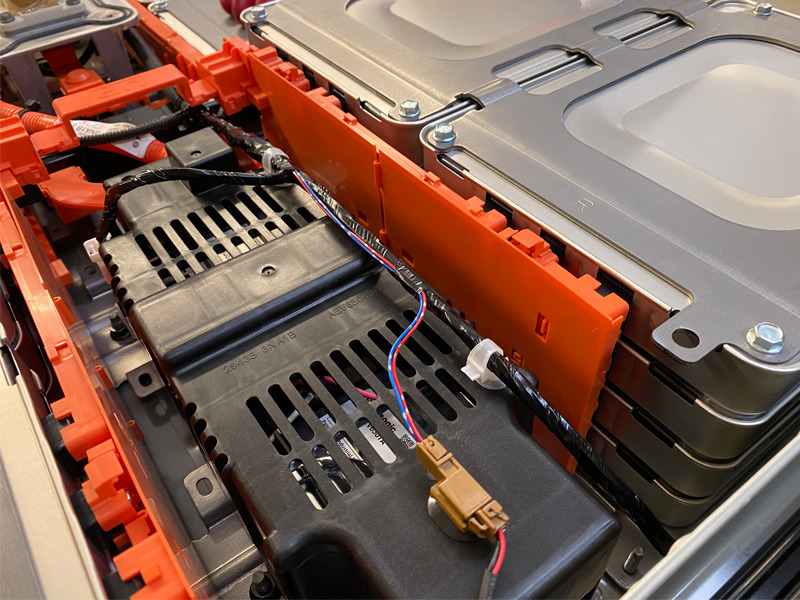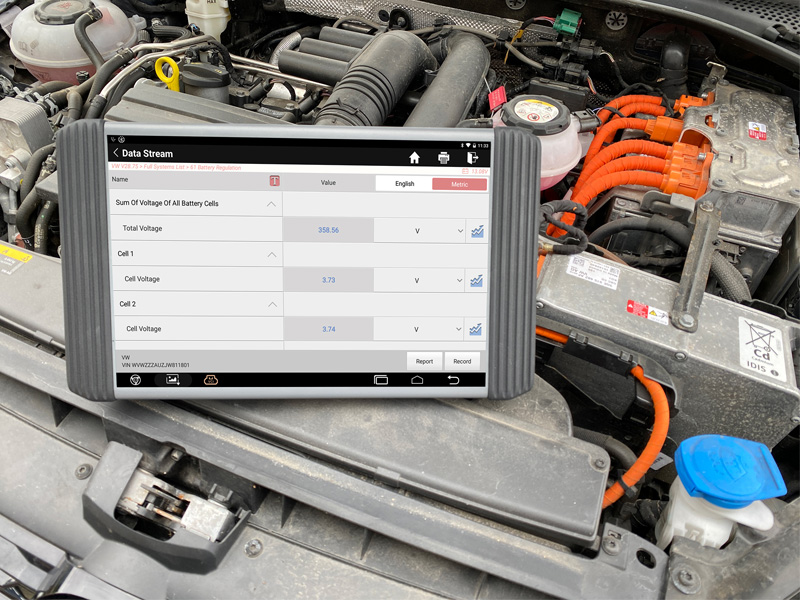
Assessing the condition of an EV battery easy. However, there are two main indications we can use: state of charge (SOC), and state of health (SOH).
State of charge
State of charge is a measure of the amount of energy left in a battery compared with the energy it had when it was full. It gives the driver an indication of how much longer a battery will continue to work before it needs recharging. It is considered as a measure of the short-term capability of a battery.

However, it is more difficult to define SOC than it would first appear. It is defined as the available capacity expressed as a percentage of a given reference, which could be its:
- rated capacity (as if new)
- latest charge-discharge capacity.
A vehicle that has a range of, say, 100km on a fully charged brand new battery, could reasonably expect a range of 50km if it was 50 per cent charged. However, after ten years or so, the capacity of the battery when fully charged may only be 80 per cent of what it used to be. An indication of 50 per cent charge would now only give a 40km range.
Because electric vehicles use the SOC to determine range, it should ideally be an absolute value based on the capacity of the battery when new. Several methods of estimating the state of charge of a battery have been used.
The easiest way to monitor SOC is a voltage measurement, but this does depend on several factors. An open circuit voltage will be higher than when current is flowing due to cell internal resistance. Temperature also has a big effect. Lithium-ion batteries also have a cell voltage that doesn’t change that much between fully charged and fully discharged. Most are also actually operated between 80 per cent and 20 per cent as this reduces degradation over time. The voltage changes are therefore even smaller. Nonetheless, taking all factors into account, a voltage measurement under a known load, gives a reasonable estimate of SOC.

It is also possible to calculate state of charge by measuring current and time (in or out). Current multiplied by time gives a suitable value for SOC.
State of health
The state of health (SOH) of a battery is a measurement that indicates the general condition of a battery and its ability to perform compared with a new battery. It considers charge acceptance, internal resistance, voltage and self-discharge. It is considered as a measure of the long-term capability of a battery.
SOH is an indication not an absolute measurement. During the lifetime of a battery, its performance deteriorates due to physical and chemical changes. Unfortunately, there is no agreed definition of SOH.
Cell impedance or cell conductivity is often used as a reasonable estimate of SOH. More complex systems monitor other parameters and involve a range of calculations. Because SOH is a figure relative to the condition of a new battery, the measurement system must collect and save data over time and monitor the change.

Counting the charge/discharge cycles of the battery is a measure of battery usage and can be used to indicate SOH, if compared to the expected values over time. This is because the capacity of lithium-ion cell deteriorates quite linearly with age or cycle life. The remaining cycle life can therefore be used as a measure of SOH.
At the time of writing, there is much discussion and related development of regulations that will force manufacturers to display or provide easy access to their vehicle’s battery SOH. This is a challenge however, because the SOH data obtainable from the battery management system can be manufacturer specific and not always accurate – so a level of accuracy will be required in the regulations too.









